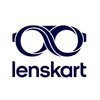

TVS Sundram Fasteners




30+ TVS Sundram Fasteners Interview Questions and Answers
Q1. How will you define process flow of a part with it’s drawing ?
Process flow of a part with its drawing involves defining the steps required to manufacture the part as per the drawing.
Identify the raw materials required for the part
Define the manufacturing processes involved in creating the part
Determine the quality checks required at each step
Ensure compliance with safety and regulatory standards
Document the process flow for future reference
Example: Process flow for manufacturing a car engine component

Q2. What tool you’ll use to cut a part with tolerance of 50 microns?
A CNC machine with high precision cutting tools.
A CNC machine with high precision cutting tools can achieve a tolerance of 50 microns.
The cutting tools should be regularly maintained and calibrated to ensure accuracy.
The material being cut should also be of high quality and uniform thickness to achieve the desired tolerance.
Other factors such as cutting speed, feed rate, and coolant should also be optimized for the specific material and tooling being used.

Q3. What are the things to be handed over during serial production?
The necessary documents, equipment, and training must be handed over during serial production.
Documentation such as work instructions, quality control plans, and inspection reports
Equipment and tools required for production
Training materials and sessions for operators and maintenance personnel
Product samples for quality control purposes
Any necessary certifications or regulatory approvals
Maintenance and troubleshooting guides

Q4. Different between quality control and quality assurance?
Quality control is the process of checking the product to ensure it meets the desired quality standards. Quality assurance is the process of ensuring that the product is made to meet the desired quality standards.
Quality control is reactive while quality assurance is proactive
Quality control focuses on identifying defects while quality assurance focuses on preventing defects
Quality control is a product-oriented process while quality assurance is a process-oriented process
Qual...read more

Q5. Why are you choosing this Mechanical field?
I am choosing the Mechanical field because of my passion for working with machines and my interest in precision engineering.
Passion for working with machines
Interest in precision engineering
Opportunity to work with advanced technology
Potential for career growth and development
Enjoyment of problem-solving and troubleshooting
Examples: fascination with how things work, previous experience with mechanical projects

Q6. What is the purpose of control chart?
Control chart is a statistical tool used to monitor and control a process over time.
It helps to identify if a process is stable or not
It helps to detect any changes or abnormalities in the process
It helps to determine if a process is meeting its target or not
It helps to improve the process by identifying areas of improvement
Examples: X-bar chart, R chart, S chart, etc.

Q7. What is Mechanical engineer?
A mechanical engineer is a professional who applies principles of physics and materials science to design, analyze, and manufacture mechanical systems.
Mechanical engineers design and develop mechanical systems, such as engines, machines, and tools.
They use principles of physics and materials science to analyze and optimize the performance of mechanical systems.
Mechanical engineers work in various industries, including automotive, aerospace, energy, and manufacturing.
They may ...read more

Q8. How many axis in cnc machine?
CNC machines can have 3, 4, or 5 axes depending on the type and complexity of the machine.
CNC machines use axes to control the movement of the cutting tool.
3-axis machines can move the tool along the X, Y, and Z axes.
4-axis machines can also rotate the tool around the X-axis.
5-axis machines can tilt the tool to reach difficult angles.
The number of axes determines the complexity and precision of the machine.


Q9. Diff between water and oil pump? m, cm, mm, micron difference? Thread gauges(m8,m4,m10..etc) pitch? Types of gauges?
Water pumps are used to move water, while oil pumps are used to move oil. They differ in design and function.
Water pumps are typically centrifugal pumps, while oil pumps are often positive displacement pumps.
Water pumps are designed to handle water, while oil pumps are designed to handle oil.
Water pumps may have impellers made of plastic or other materials that can handle water, while oil pumps may have metal impellers that can handle oil.
The units of measurement for water pu...read more

Q10. Quality Tools used to solve the problem
Some quality tools used to solve problems include Pareto analysis, Fishbone diagram, and 5 Whys.
Pareto analysis helps identify the most significant causes of a problem
Fishbone diagram visually displays the potential causes of a problem
5 Whys technique involves asking 'why' multiple times to get to the root cause of a problem

Q11. How vmc different from cnc ?
Vmc is a type of cnc machine used for milling operations.
Vmc stands for Vertical Machining Center while CNC stands for Computer Numerical Control.
Vmc is a type of CNC machine used for milling operations while CNC can be used for various operations like milling, drilling, turning, etc.
Vmc has a vertical spindle orientation while CNC can have both vertical and horizontal spindle orientations.
Vmc is used for high precision and accuracy while CNC can be used for both high precisi...read more

Q12. How to assemble back to back angular contact beraring?
To assemble back to back angular contact bearings, align the bearings and press them onto the shafts using a hydraulic press.
Clean the shaft and bearing bores before assembly
Align the bearings back to back with the inner races facing each other
Use a hydraulic press to press the bearings onto the shafts
Ensure that the bearings are seated properly and rotate smoothly
Apply a light coat of lubricant to the bearings before installation

Q13. What was the common voltage used in house?
The common voltage used in houses is typically 120 volts in North America and 230 volts in Europe.
In North America, the standard voltage for household outlets is 120 volts.
In Europe, the standard voltage for household outlets is 230 volts.
Some countries may have different standard voltages for household use, so it's important to check local regulations and standards.

Q14. List out quality control methods?
Quality control methods ensure products meet standards. Examples include statistical process control and Six Sigma.
Statistical process control
Six Sigma
Total Quality Management
Failure mode and effects analysis
Control charts
Inspection
Testing
Auditing
ISO certification

Q15. What is the Indian railway voltage?
The Indian railway voltage is 25 kV AC (alternating current) at 50 Hz frequency.
Indian railways use 25 kV AC voltage for traction purposes.
This high voltage is used to power the electric locomotives and trains.
The frequency of the voltage is 50 Hz.
The high voltage is necessary to efficiently power the trains over long distances.

Q16. DRAW THE MECHANICAL DIAGRAM OF HYDRAULIC POWER PACK?
A hydraulic power pack consists of various mechanical components that work together to generate hydraulic power.
The power pack typically includes a hydraulic pump, motor, reservoir, filter, and control valves.
The pump draws fluid from the reservoir and sends it through the filter to remove any contaminants.
The motor converts the mechanical energy into hydraulic energy, which is then used to power various hydraulic systems.
The control valves regulate the flow and pressure of t...read more

Q17. What is cnc? What is vmc
CNC stands for Computer Numerical Control, a technology used in manufacturing to control machine tools. VMC stands for Vertical Machining Center, a type of CNC machine.
CNC is a manufacturing technology that uses computerized control systems to operate machine tools.
It involves the use of coded instructions to control the movement and operation of the machine.
CNC machines can perform precise and complex operations with high accuracy and repeatability.
VMC is a specific type of ...read more

Q18. Which speed use in lathe at carbide work
Carbide work on a lathe typically requires higher speeds for optimal performance.
Carbide work on a lathe usually requires speeds between 800-2000 RPM
Higher speeds are needed to prevent chipping or premature wear of the carbide tooling
Consult the manufacturer's recommendations for the specific carbide tool being used

Q19. What is seal leak, Body leak?
Seal leak refers to the leakage of fluid or gas through a seal, while body leak refers to the leakage of fluid or gas through the body of a product.
Seal leak can occur in various products such as engines, pumps, and pipelines.
Body leak can occur in products such as tanks, containers, and pipes.
Seal leak can be caused by wear and tear, improper installation, or manufacturing defects.
Body leak can be caused by corrosion, cracks, or faulty welding.
Both types of leaks can lead to...read more

Q20. What is production? It is production
Production is the process of creating goods and services using resources and labor.
Involves transforming raw materials into finished products
Can be done manually or with the use of machines
Includes planning, organizing, and controlling the production process
Examples include manufacturing cars, baking bread, and providing healthcare services

Q21. Ball screw and LM guard type and work
Ball screws are used for converting rotational motion into linear motion, while LM guides are used for guiding linear motion.
Ball screws use ball bearings to reduce friction and increase efficiency in converting rotational motion into linear motion.
LM guides use linear motion bearings to provide smooth and precise linear motion guidance.
Ball screws are commonly used in CNC machines, robotics, and other precision machinery.
LM guides are often used in machine tools, automation ...read more

Q22. How do you think you would add value?
I would add value by utilizing my experience in HRD to improve employee engagement and retention.
Developing and implementing employee engagement programs
Conducting regular training and development sessions
Creating a positive work culture through effective communication and recognition programs
Streamlining HR processes to improve efficiency
Ensuring compliance with labor laws and regulations
Reducing employee turnover through effective retention strategies

Q23. what is hdg process in fasteners
HDG process stands for Hot Dip Galvanization, a process used to coat fasteners with a layer of zinc to prevent corrosion.
HDG process involves dipping fasteners in a bath of molten zinc at high temperatures
The zinc coating provides a sacrificial layer that corrodes before the fastener does
HDG process is commonly used in outdoor and marine environments
Examples of fasteners that undergo HDG process include bolts, nuts, screws, and washers

Q24. Which material use in die case
Tool & DIE makers typically use materials like steel, aluminum, and carbide in die casting.
Steel is commonly used for its durability and heat resistance.
Aluminum is often used for its lightweight properties.
Carbide is used for its hardness and wear resistance.
Other materials like copper, brass, and titanium may also be used depending on the specific requirements of the die casting process.

Q25. TQM full form and production planning
TQM stands for Total Quality Management. Production planning involves creating a detailed plan of how to produce goods efficiently.
TQM focuses on improving quality at every level of the production process
It involves continuous improvement, employee involvement, and customer satisfaction
Production planning includes setting production goals, scheduling tasks, and allocating resources
It aims to optimize production processes to meet demand and minimize costs

Q26. How yo assemble ball screw?
To assemble a ball screw, first clean all components and apply lubricant. Then insert the ball bearings and screw shaft into the nut.
Clean all components thoroughly before assembly
Apply lubricant to the screw shaft and nut
Insert the ball bearings into the nut
Insert the screw shaft into the nut
Tighten the assembly to the required torque
Test the ball screw for smooth operation

Q27. Mechanical engineering favourite subjects
My favorite subjects in mechanical engineering are thermodynamics, fluid mechanics, and materials science.
Thermodynamics: Study of energy and heat transfer in mechanical systems. Example: analyzing the efficiency of an engine.
Fluid mechanics: Study of fluids in motion and at rest. Example: designing a pump system for a manufacturing plant.
Materials science: Study of properties and behavior of materials. Example: selecting the right material for a specific application.

Q28. Target achieved in product plans
Product plans achieved target
We successfully achieved our target in product plans
Our team worked hard to meet the goals set for the product plans
We exceeded our target in some areas of the product plans
Customer feedback has been positive, indicating that we met their needs

Q29. How ti grind drills
To grind drills, use a bench grinder with a fine grit wheel, ensure the drill is securely held in a vise, and maintain a consistent angle and pressure while grinding.
Use a bench grinder with a fine grit wheel for precision grinding
Securely hold the drill in a vise to prevent movement during grinding
Maintain a consistent angle (typically 118 degrees for general purpose drills) and pressure while grinding
Check the drill frequently for overheating and quench in water to prevent ...read more

Q30. What is powder metallurgy
Powder metallurgy is a manufacturing process that involves forming metal powders into solid components.
Metal powders are compacted in a die to form a green compact.
The green compact is then sintered in a furnace to bond the particles together.
Powder metallurgy is used to create complex shapes and achieve high material utilization.
Examples include gears, bearings, and automotive components.

Q31. what is 6h and 6g
Insufficient information provided to answer the question.
The question is incomplete and lacks context.
Without additional information, it is impossible to provide a meaningful answer.
Clarification is needed on what 6h and 6g refer to.

Q32. Material properties
Material properties refer to the characteristics and behavior of a material under specific conditions.
Material properties include mechanical, thermal, electrical, and chemical properties.
Mechanical properties include strength, hardness, elasticity, and ductility.
Thermal properties include conductivity, expansion, and specific heat.
Electrical properties include conductivity, resistivity, and dielectric strength.
Chemical properties include reactivity, corrosion resistance, and ...read more

Q33. Draw iron carbon diagram
Iron carbon diagram shows the phases of iron and carbon at different temperatures.
Iron carbon diagram displays the phases of iron and carbon at various temperatures.
It helps in understanding the microstructure of steel and its properties.
The diagram typically includes regions such as austenite, ferrite, cementite, and pearlite.
The eutectoid point on the diagram represents the composition of steel where pearlite forms.
The diagram is essential for heat treatment processes in me...read more





Top HR Questions asked in TVS Sundram Fasteners
Interview Process at TVS Sundram Fasteners

Top Interview Questions from Similar Companies









Reviews
Interviews
Salaries
Users/Month












